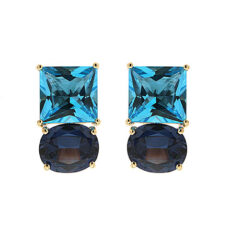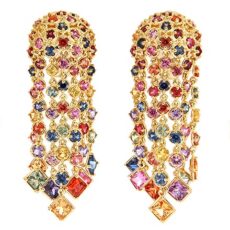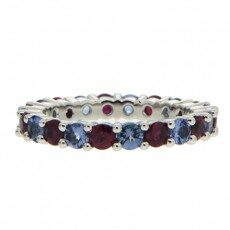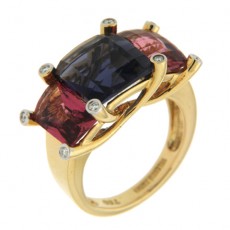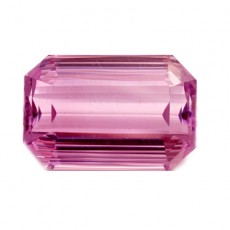A type of chrysoberyl, alexandrite is famed for its ability to change color under different lighting. Depending on the crystal, it may also feature inclusions that create a cat’s eye effect, not matter its current hue.
Different Types of Gemstones
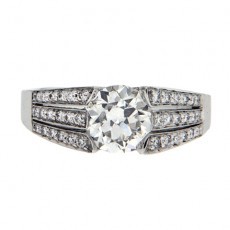
Made of pure carbon, diamonds are born underground through tremendous heat and pressure. Since ancient times, the stone was known for its exceptional hardness. Its name originates from the Greek “adamas,” meaning unbreakable. From the 17th century onward, diamond cutters started faceting the jewel to achieve brilliance within the stone, leading to the diamond’s reputation for shine.
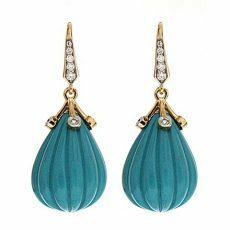
Turquoise is an opaque gemstone most famous for its blue green color. It has been beloved for thousands of years, and has been found in Egyptian tombs dating to 4,000 BCE. Despite its long history, the name “turquoise” is relatively new, dating only as far as the 16th century. At this time, the gemstone came to Europe through the country of Turkey. The French word “turques” eventually became “turquoise.”

One of the most famous types of beryl, emeralds are beloved for their intense green. This stone has been coveted since at least 330 BCE, and set into jewelry everywhere from Colombia to India. Along with its verdant hues, emeralds are admired for their eye visible clarity characteristics, known as jardin. A fragile gem, they’re usually cut into cabochons or rectangles with cut corners to discourage chipping.
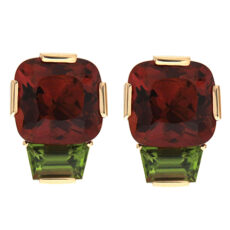
Citrine is a member of the quartz family, making it a close relative to gemstones such as amethyst or rock crystal. What makes citrine stand out from other quartz varieties is its golden hues, which come from traces of iron. The name of the jewel comes from the Latin “citrina,” meaning “yellow.” Its color range also includes golden brown and orange-red hues.
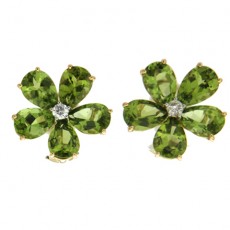
“Divine Lime” – Peridot is the gem form of the mineral olivine. It is a volcanic gem, found in the rocks created by volcanoes and in meteors that fell to earth. The iron in its structure is responsible for its grassy hue, which ranges from a light summery yellow-green to a vibrant glowing green. Ancient Romans referred to Peridot as “evening emerald”, since its verdant shades didn’t darken at night, but remained visible by lamplight. The jewel was often used to decorate medieval churches and was thought to possess the power to drive away evil spirits, especially when set in gold. Today, Peridot is especially treasured in Hawaii as the goddess Pele’s tears.

Tourmaline is a boron silicate mineral best known for its rainbow of colors. The jewel was first discovered in Sri Lanka, which is reflected in the name. “Tourmaline” was originally “turmali,” or “mixed gem” in Sinhalese. The variety of colors tourmaline has to offer once lead to confusion, with green stones being mistaken for emeralds, red for rubies, and so forth.
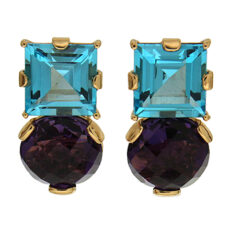
Topaz is a silicate gemstone with aluminum and fluorine in its chemical formula. In its purest state, the jewel is completely colorless. Topaz’s pinks, reds and purples are due to trace elements of chromium, while blue is often the result of irradiation. Brown and yellow appear when there are irregularities in the crystal’s atomic structure.

Quartz is a silicon dioxide mineral found in abundance on the earth’s surface. Its crystal structure is trigonal, a prism with long sides that are rectangular with triangular short sides. Quartz’s trigonal shapes cling together, making hexagonal rods with pointed tops. Geodes are a popular way of admiring the shape of quartz rough.

Pearls are an organic gemstone produced by a number of mollusk species. This jewel has been admired for thousands of years and highly sought after, despite their historic rarity. Legends on how to culture pearls emerged in different parts of the world. Among the reasons this gem were so valued was for medicinal benefits, such as treating the eyes and bones. Pearls were also believed to represent heaven, love and virtue.
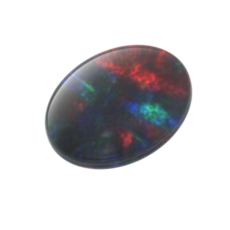
An unusual form of silica, opals are made of countless microscopic spheres that each bend light into various colors. When the silica merges into an eye visible crystal, the effect is that of rainbows in stone. No two opals feature the same play of color. The flashing mosaic has inspired countless legends about the jewel.
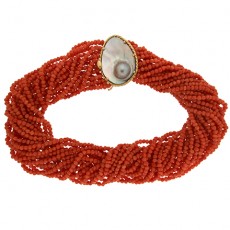
Born from the ocean, precious coral is made of the remains of Corallium rubrum, a genus known for its saturated reds and pinks. Like pearls, coral is made mostly of calcium carbonate, though most coral is tinted with carotenoids. While white and black varieties are used in jewelry, warm hues are associated with the jewel so that “coral” also refers to a shade of pink.
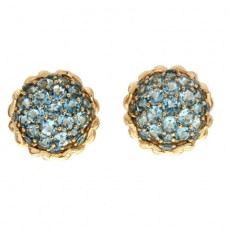
Aquamarine is a type of beryl known for its blue and blue-green hues. The stone is often transparent, with its color is reminiscent of the ocean, earning the jewel its aquatic name. Aquamarine is easily found, with rough as large as 110 kilograms available. The color and possible sizes provide allows for artists to experiment with designs and stories.
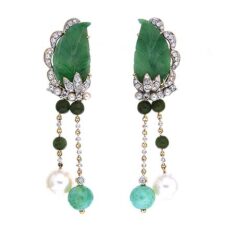
Jade is a name shared by two gemstones, jadeite and nephrite. Both jewels are famed for their shades of green, though jadeite can take on many hues and nephrite may be streaked with white. Though they aren’t as hard as some other gemstones, jade is among the toughest of stones, able to resist chipping and strong blows. Between its beauty and durability, the jewel has been carved into ornaments, statues, tools and even clubs.
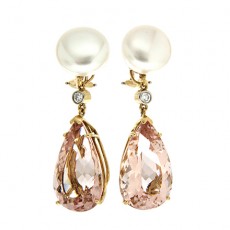
A member of the beryl family, morganite gets its hues from traces of manganese. Its coloring is usually pink with possible bluish or orange tones, making the rose tints closer to purple or peach. While the jewel is also known as pink beryl, rose beryl or pink emerald, the name “morganite” was selected in 1910 by the New York Academy of Sciences in honor of JP Morgan.
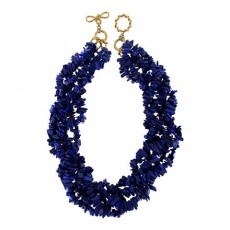
Lapis lazuli is the merger of several stones, including lazulite, calcite and pyrite. The result is a blue gemstone bearing streaks of white along with gold flecks. Lapis lazuli has been beloved for over six thousand years, admired by many civilizations. The most prized incarnations of the stone are a royal to deep blue with few traces of white.
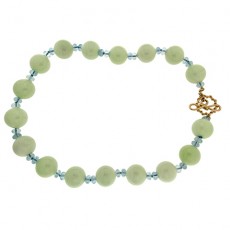
Like other members of the chalcedony family, chrysoprase is a rock made of quartz and morganite finely intertwined together. What distinguishes chysoprase is traces of nickel oxide which give the jewel its distinctive apple green. It should not be mistaken for mtorolite, a green chalcedony that gets its hues from chrome.
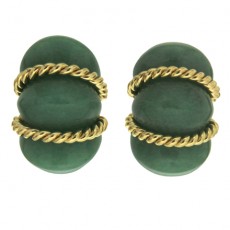
Aventurine is a name shared by a type of quartz, feldspar and glass. The term comes from the Italian words for “by chance.” Aventurine glass was first created in the 18th century, featuring tiny flecks of copper which caught the light and shone through the glass. When quartz and feldspar with this property was discovered, they received the same name. The optical phenomenon was eventually referred to as “aventurescence.”
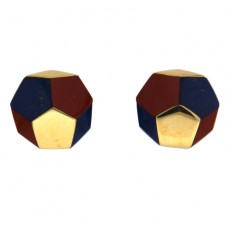
A multicolored type of chalcedony, jasper has a long history. The jewel gets it colors from layers of sediment or volcanic ash settling one on top another, eventually solidifying into a unified whole. Up to one fifth of the crystal may be made of impurities such as iron oxide. The amount and variety of minerals determines the colors of the stone. Body colors are red, brown, yellow, white or on rare occasions, blue or green.
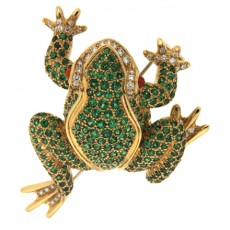
Tsavorite is a type of grossular stone, which in turn is a version of garnet. This jewel’s crystal structure is made of calcium, aluminum, silica and oxygen, though its verdant hues are due to traces of chromium and vanadium. Though tsavorites are famed for being a very green garnet, most grossular garnets are brown, orange or red.
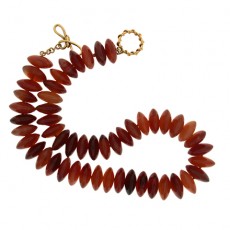
Stories abound of agate and its power. It was linked to the stars and the divine, while having the ability to repel evil. The jewel is also able to give its wearers a wide range of abilities and benefits, from good dreams to stopping lightning. Agate even had a role in early aviation, as part of an attempt to create a magnetic powered airship.
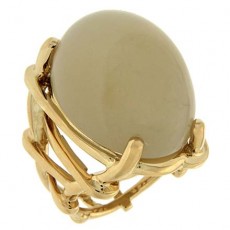
Moonstones are a type of feldspar prized for the layer of haze that floats just beneath its surface. This sheen, known as adularescence, closely resembles moonlight, giving the jewel its name. The most prized of moonstones are transparent with a blue body color, adding to the ethereal nature of the stone. As a jewel that resembles the sky, it awoke many legends.
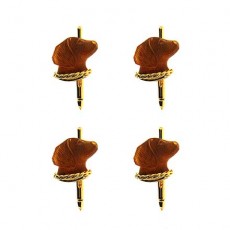
Even after thousands of years, amber continues to fascinate. It carries a wealth of mysteries, such as the nature and origins of the materials trapped within. There’s also the unknown journey they take traveling through the sea before arriving on beaches. The iconic golden brown color also captures the imagination. Altogether, amber provides a wealth of questions that prompt the birth of stories.
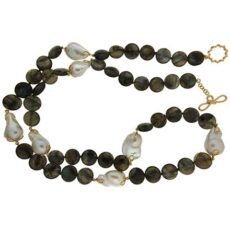
This member of the feldspar family is named for place where it was discovered, Labrador, Canada. Samples have since been found in Finland, Madagascar, Australia, Paraguay, India and other countries. Labradorite has a Mohs hardness of 7, similar to quartz, and has a glassy sheen. The stone is usually translucent or transparent, and has a […]





